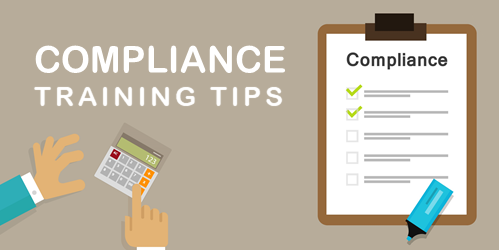Two Things to Consider If You Build Compliance Training
Author:
Go to Source

In a recent survey, 68% of e-learning developers told us that they build compliance training. In fact, it’s the majority of what people build. Compliance training is a bit tricky because e-learning contains the word learning, but often compliance training doesn’t really have a real connection to learning. If we’re honest, a lot of it is a big information dump with little real connection to the learner’s day-to-day activities.
For example, you don’t hire a bunch of unethical people and then figure it’ll all work out after they complete their ethics training. Instead, you have ethical people and the training clarifies and reinforces the organization’s guiding principles. But it doesn’t really change behaviors much, unless your work the mob, maybe.
That doesn’t mean there’s not a real learning component to compliance training, it just means that it’s usually more about certification of understanding rather than changing behaviors.
Here are a couple of things to consider when building your next compliance training course.
What does the law say?
“We can’t build good courses because the law requires we do XYZ.”
That may be the case. However, often it’s not. I’ve worked on plenty of compliance training programs that were driven by the myth of legal requirements. I always challenge that statement. If it’s true, it’s true. But prove it.
If it’s not, then don’t use that misunderstanding to dictate how you build your courses.
Let your learners test out.
Since most compliance training is about certification and many of the people already know the content, why not let them prove it upfront?
Give them an option to take an assessment at the front end of the course. If they can prove they understand the content, then they’ve met the compliance certification objectives (outside of any special legal requirements). If they can’t prove it, they understand why they need to take the training.
Keep in mind that assessing their understanding doesn’t mean it has to be a bunch of boring multiple choice quiz questions. It could be a series of case studies or interactive scenarios.
Some employers don’t want people testing out. The argument is usually along the lines that even if they know the information, it’s a good thing to see it again. I’d start with the cost of training and how forcing people to take courses where they already know the information is not necessarily good stewardship of the organization’s resources. And then take it from there.
Compliance training isn’t always the most engaging content we work with; and it does waste a lot of time. Find out what you really have to do to be compliant. And then create the best learning experience you can.
What do you do to make your compliance training more engaging?
Download the fully revised, free 63-page ebook: The Insider’s Guide to Becoming a Rapid E-Learning Pro
Upcoming E-Learning Events
Coming to Australia and New Zealand.
- We’re doing two different tours. The same workshop but in five different cities: Sydney, Auckland, and Christchurch in 2019 with Brisbane and Melbourne in early 2020. Choose the one closest to you. Details below.
July 24 & 25 (Minneapolis). Articulate Roadshow: Learn more. SOLD OUT!- August 14 & 15 (Seattle). Articulate Roadshow: Learn more and register here.
- September 9 & 10 (Sydney). Articulate Roadshow: Learn more and register here.
- September 12 & 13 (Auckland). Articulate Roadshow: Learn more and register here.
- September 16 & 17 (Christchurch). Articulate Roadshow: Learn more and register here.
- November 4 (Manchester, UK). Articulate Roadshow: Learn more and register here (early bird ends October 4).
- November 5 & 6 (London, UK). Articulate Roadshow: Learn more and register here (early bird ends October 4).
- November 8 (Edinburgh, UK). Articulate Roadshow. Details coming soon.
2020
- April 20 & 21 (Brisbane). Articulate Roadshow: Learn more and register here.
- April 23 & 24 (Melbourne). Articulate Roadshow: Learn more and register here.
Free E-Learning Resources
 |
 |
 |
|
Want to learn more? Check out these articles and free resources in the community. |
Here’s a great job board for elearning, instructional design, and training jobs |
Participate in the weekly elearning challenges to sharpen your skills |
 |
 |
 |
|
Get your free PowerPoint templates and free graphics & stock images. |
Lots of cool elearning examples to check out |
Getting Started? This elearning 101 series and the free e-books will help. |
